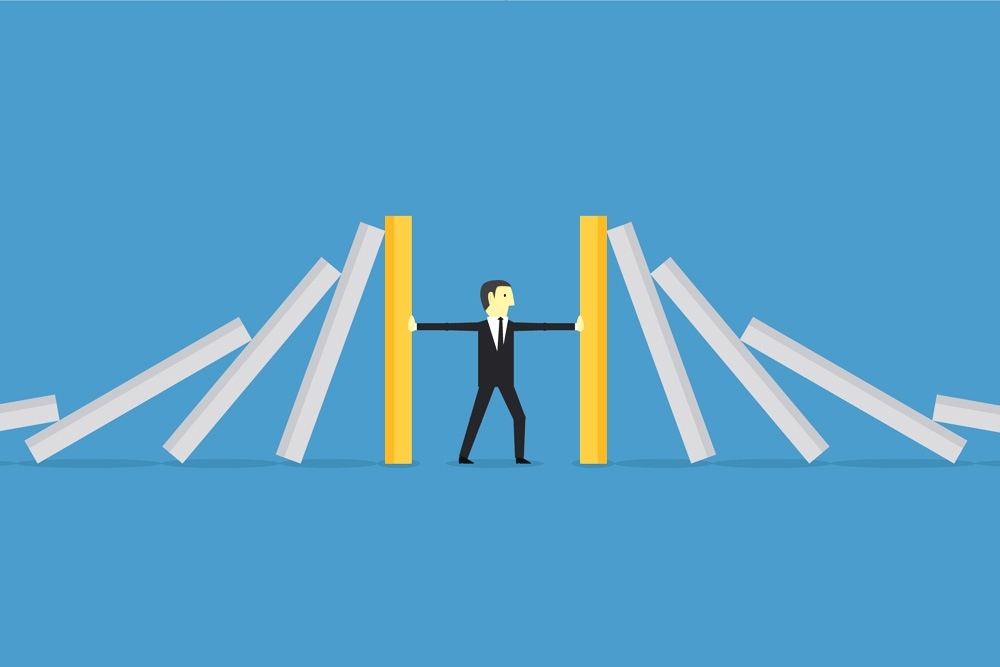
Natural disasters are unavoidable. While good planning and maintenance can help a business avoid something like a broken HVAC unit or frozen pipes, there's not really anything that can stop the path of a tornado or redirect a hurricane. Fortunately, there are a number of things that business owners and managers can do to help keep things up and running, even in the aftermath of a disaster.
1. Understand the Risk
A business that's near a riverfront will probably be more likely to suffer a flood than an earthquake. This doesn't mean that managers and employees shouldn't know what to do if an earthquake happens, but it does mean that their time and energy is better spent prioritizing how to respond to a flood. Know what disasters are likely to strike and do a business impact analysis. Performing a BIA will yield valuable information about how a disaster is likely to disrupt things and point out deficiencies that could disrupt continuity.
2. Have a Plan
Even if a business can't reasonably prevent a disaster, it should have a plan for the worst-case scenario. This needs to include items like:
- Evacuation routes and procedures.
- How to maintain supply lines post-disaster.
- How to prevent the loss of important data.
- How many weeks' worth of inventory to keep on hand.
- What will cause the plan to go into effect.
- How to keep communicating with clients.
- Emergency functions.
- Equipment needed for cleanup and, if necessary, teleworking.
- Any changes to the chain of command, telephone chains, and other lines of communication.
If any parts of the plan require new equipment, create a timeline for obtaining it. Don't put it off until a disaster strikes -- it may not be available anymore.
3. Train and Test
Every plan looks good until it needs to be followed. After creating a disaster preparedness plan, make sure that every employee involved in it understands how a disaster will impact their regular job functions, and is trained in what they need to do. Test the plan, and see which areas are lacking. Don't treat a disaster plan as if it were set in stone — test it regularly and update as needed.
4. Have a Good Insurance Plan in Place
Insurance is one of those things that feels like a headache until it's actually needed. Disasters often cause damage that can be prohibitively expensive to fix — from holes in the roof, to broken windows, to damaged equipment, to water damage and mold remediation. Even though disasters are rare, they can shut a business down.
It's important to choose an insurance policy based on value, not price. Cheap policies might seem like a good deal at first but might not offer the coverage that a business needs when it really matters. It's equally important to understand exactly what's covered by insurance. Find a trustworthy agent that can help craft an individualized policy.
5. Contact FEMA
The Federal Emergency Management Agency offers assistance in the event of a disaster. If there are any damages not covered by insurance, a FEMA loan can help offset the costs of repairs. Be on the lookout for FEMA fraud — it's not at all uncommon for opportunistic criminals to strike in the wake of a disaster.
Real FEMA employees will always have a photo ID and will never ask for or accept money. There is no way to speed up an application by paying the employee. If any problems come up during the process, call FEMA directly at 800-621-3362.
6. Redundancy, Redundancy, Redundancy
Nothing is more frustrating than losing data. If a business has all of their digital files saved in a single location — or worse, on a single machine — all it takes is a blackout or a flood to wipe out everything. That's where redundancy and backups become important. Keeping copies of files in cloud storage, or across different servers, can be a lifesaver in an emergency. If disaster strikes and wipes out one server farm, all of the data won't be wiped out with it.
Options for creating a backup vary. The most expensive choice is to essentially create a copy of the primary datacenter, primed to switch immediately in an emergency. Many are taking advantage of cloud computing, shifting both services and infrastructure between the cloud and regular data centers as needed. Some companies that offer traditional hardware backups are also expanding into the cloud, offering users a multitude of ways to ensure that their data stays safe in an emergency.
Disasters can strike at any time, and always leave disruption in their wake. Businesses can help keep things up and running by adequately preparing themselves, training their personnel, ensuring that they have the means to pay for repairs, and making sure that their data is properly backed up. An ounce of prevention is worth a pound of cure, and a good disaster plan can mean the difference between a business that shuts down, and one that's able to keep serving their clients.
If your business has suffered damage from a disaster, Roman’s licensed property adjusters are on call 24/7 to respond and appraise the damage. To request a consultation contact Roman by calling us at 800.422.9032 or by sending us an email.
